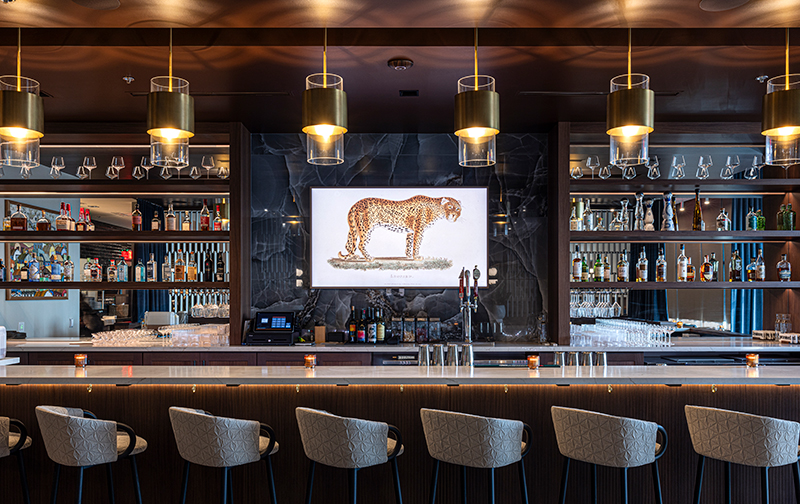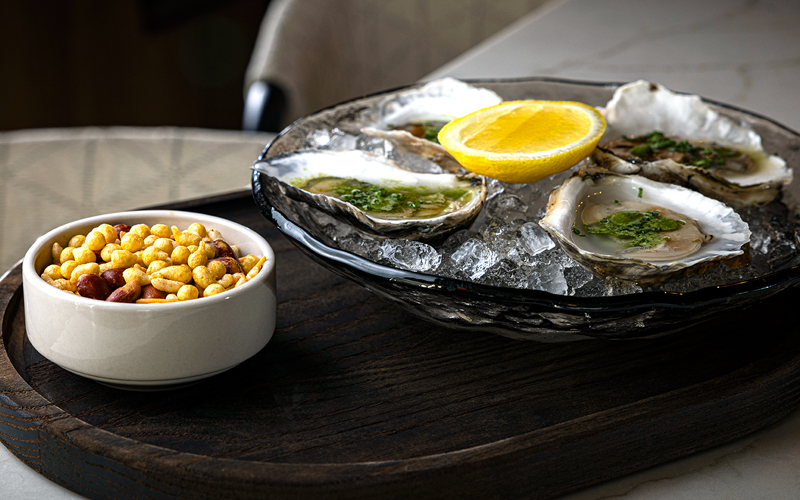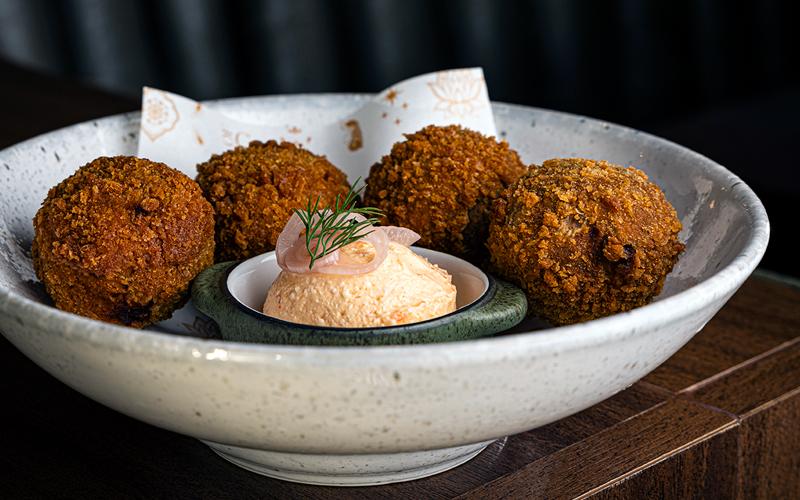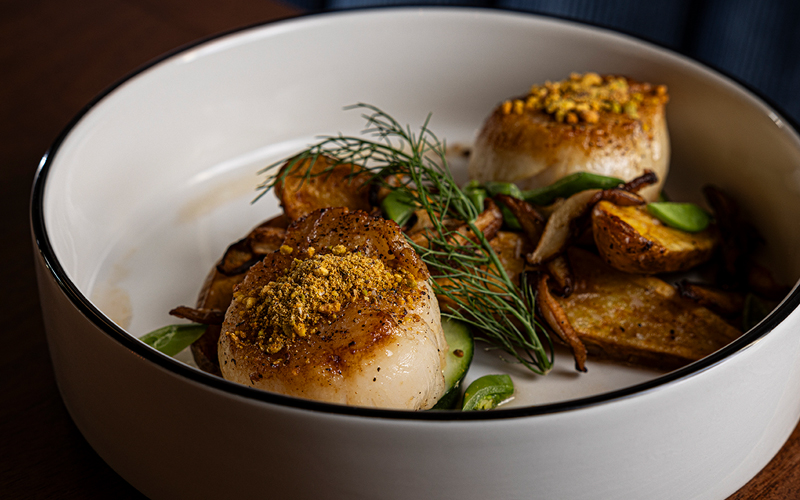
For as long as people have traded goods and ingredients, there has been a blending of cuisines, and yet, “fusion food” is still considered by most chefs today as a dirty culinary term, sometimes even referred to as the “f-word” in restaurant kitchens.
The term “fusion” was first coined in the late 1980s, and it carries the stigma of its careless inception, as the term was often used to describe a “new” kind of cuisine that happened when typically white, male chefs who were classically trained to cook French cuisine attempted to take Asian ingredients and mix them into traditional French or European dishes, usually with questionable culinary success.
Today, a new generation of chefs is entering restaurant kitchens and regardless of their roots, they are developing dishes that have one foot grounded in the cuisine they grew up eating at home and the other in the foods they grew to love from dining out in the culinary melting pot that is America. These new chefs are picking and choosing what they cook, mixing and matching ingredients based on their own palates and preferences without putting a label on it.

The chef Swetha Newcomb’s splashy first restaurant, Of Course Kitchen & Company, is a good example of the effortless blending of cultures and cuisines. She even refers to her food as fusion on her website. The food this 28-year-old South Indian-born chef is preparing is American, made with local ingredients, and seasoned with the flavors and spices that come from her Indian roots, and in that way the menu at Of Course Kitchen & Company seems fresh, inviting, and innovative, while still being familiar.
This mixing of cultures is not just seen in Newcomb’s cooking, but also in the décor of her tasteful and intimate restaurant, which blends a modern American aesthetic with small subtle touches of Indian decor. A calming mix of light and dark brown woods pairs well with cream and khaki-colored walls and with sleek gold light fixtures, creating a neutral backdrop for the dramatic black-and-white striped floor tiles. The whole room is spiced up with stylish modern screens that separate the bar, kitchen, and dining room, in addition to sapphire blue banquette seating, Indigenous clay pots, and modern artwork.

A quick note about where Newcomb’s restaurant is located in the BluHawk strip center. Over the next year, BluHawk will finish construction on a $125 million dollar, 420,000-square-foot sports arena where new basketball courts, soccer fields, pickleball courts, volleyball courts, a fitness center, bowling alley, and more restaurant and retail tenants will open attracting more people to the area. Newcomb sees Of Course Kitchen & Company as being an attractive option today for those looking for a nicer restaurant out south, and a place that will be well-positioned in the future when new attractions will bring new people to her door.
My party of four ordered drinks all around once we were seated. The cocktail menu was created by Jay Sanders, co-owner of Drastic Measures and Wild Child. His drinks play with all the flavors found in Indian cuisine in a smart but subtle way. The Wish You Were Here is made with deeply spiced Opihr gin and tonka-bean syrup, which heightened all the flavors of the warming spice, topped with a South Korean yogurt-based seltzer called Milkis that gave the drink a milky hue and tangy flavor. It was spot-on the perfect drink to have as an introduction to Newcomb’s food.

The lamb keema samosa croquettes came to the table with five golf ball-sized croquettes centered around creamy whipped feta and roasted red pepper sauce redolent of curry. One bite and the crispy exterior gave way to a soft and steamy hot interior, a savory mixture of spiced ground lamb and green peas, that when dunked into the sauce brought the flavors of India brilliantly into focus.
Pav bhaji is a popular Indian street-food dish, and here it consisted of sweet, yeasty dinner rolls served with a curry that was a rich tapestry of India spices (including masala powder, fenugreek, turmeric, ginger, and chili powder) with cauliflower, okra, and potatoes. Do not miss your opportunity to sop up every bit of sauce with your own dinner roll.
The palak paneer mac and cheese came to the table with cavatappi pasta tossed in a luscious sauce of white cheddar and puréed spinach that was reminiscent of the original Indian dish, sprinkled with cashew and coriander dukkah for a bit of crunch. As someone who is not a believer in mac and cheese as an entrée after the age of 12, it was the perfect dish for those who just desire a bite of something comforting and understandable.
We ended the meal with the whole market fish, a white fish whose name or origin I did not catch when it was mentioned by the waitress. It was tender and flaky, served flash fried, head on and nestled as if it was swimming upstream in a bed of sticky basmati rice. A lovely mix of pickled vegetables, a creamy labneh-focused sauce, garam masala and Old Bay seasoning accompanied it. The crispy, hot fish gave off a heady aroma when presented to the table, because it was judiciously sprinkled with a bit of the same spices that were in the sauce accompanying it.

Side dishes that we ordered included the peri peri hand-cut fries served with fried green curry leaves and a side of curry ketchup, which I suspect had some peri peri pepper in it and was truly addictive to eat.
Eating Newcomb’s food was like playing a small trick on your palate. I equate it with how you see a slice of yellow watermelon, and your mind tricks your tastebuds into preparing to experience something other than sweet juicy watermelon. Then when you take a bite and the yellow watermelon tastes just like a red one, you find yourself pleasantly surprised. Many of Newcomb’s dishes look American, Italian, and even French when they come to the table, but once savored, layered into each dish are the recognizable and joyous Indian spices, not in terms of heat, but in seasoning and flavor.
As we left her restaurant at the end of the meal, I walked away wondering if I had gotten it all wrong. Is Newcomb’s food really Indian food, and not American food, as I declared at the beginning of this piece?
The food is unique to Newcomb, her experiences, her restaurant, and Kansas City, and that alone makes it worth a trip to Of Course Kitchen & Company to taste for yourself.


